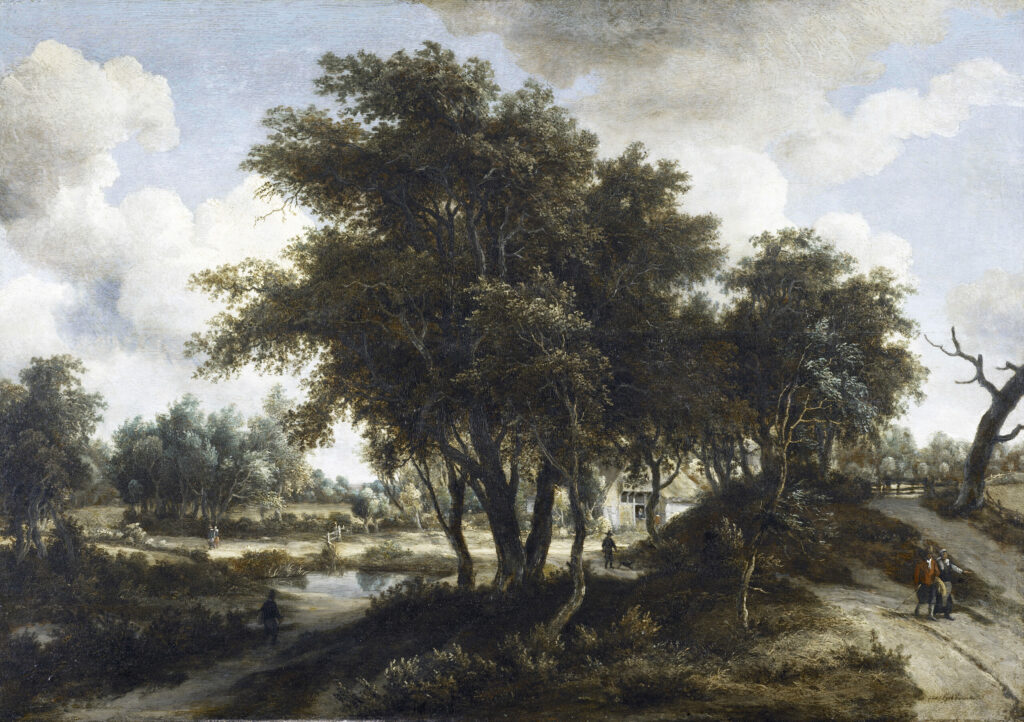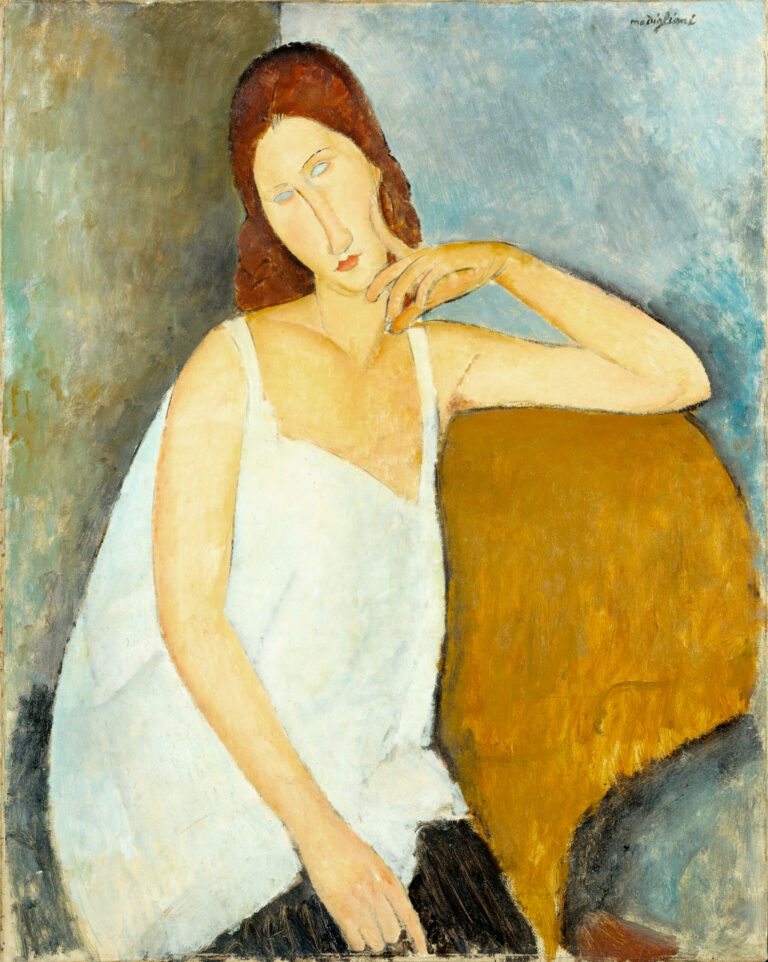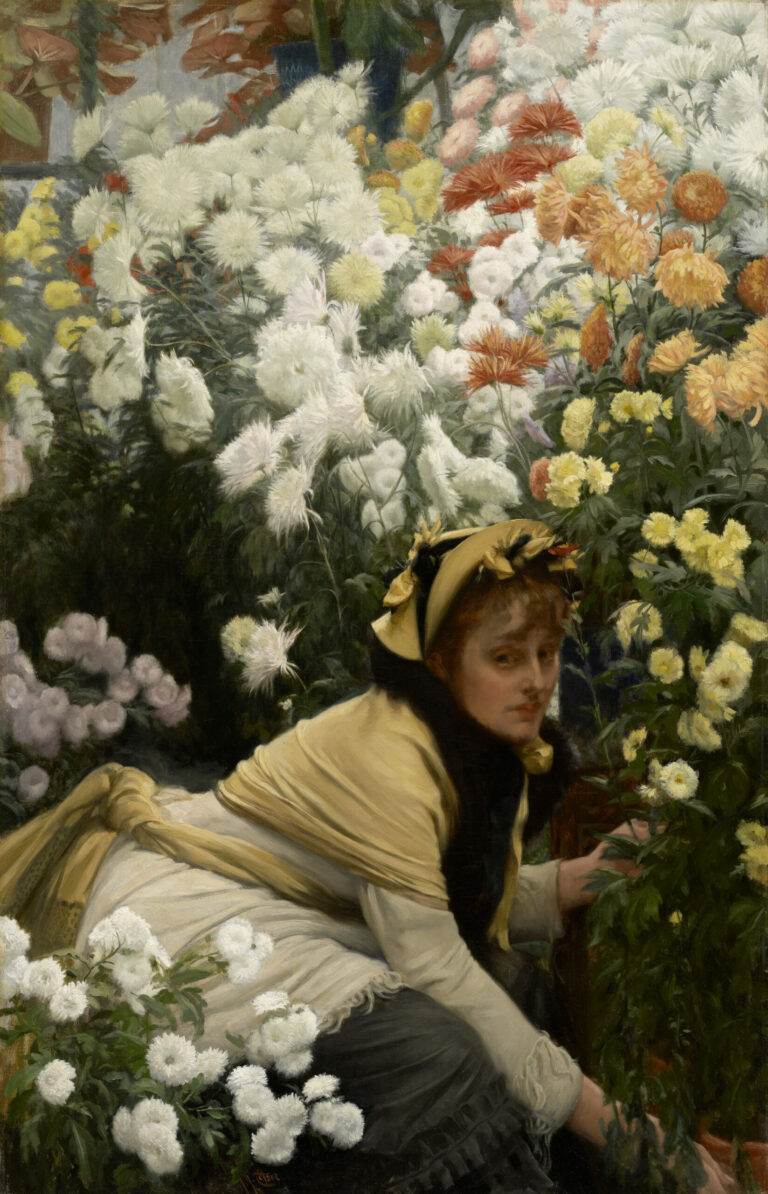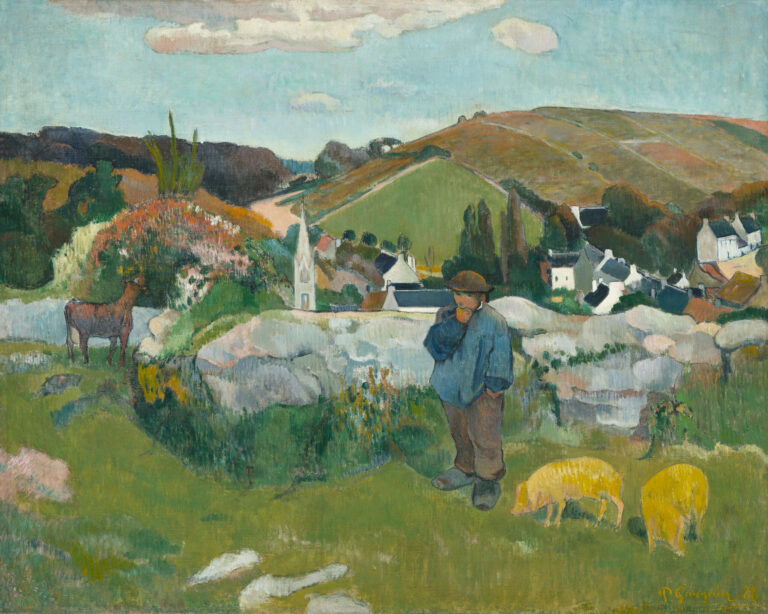
The Cottage illustrates the landscape art of Meindert Hobbema circa 1663, testament to the zenith of the Dutch Golden Age.
This bucolic composition deploys all the codes of the Dutch school: monumental sky with moving clouds, perspective skillfully orchestrated by the winding path, and golden light filtering through the foliage. At the center, the thatched cottage embodies the Dutch rural ideal, nestled beneath a majestic cluster of trees with gnarled trunks and dense foliage. Hobbema excels in the meticulous rendering of vegetation, each leaf seemingly individually observed. The figures discretely animate this peaceful nature. This idyllic vision of the Dutch countryside reveals the artist’s technical mastery: subtle impasto, transparent glazes, and a palette of warm browns contrasting with the silvery blues of the sky. The work perfectly embodies this bourgeois landscape art, reflection of a prosperous society celebrating its native land.
Further information
- The Cottage, circa 1663, by Meindert Hobbema
- 62.2 × 86.4 cm (24 1/2 × 34 inches), Oil on oak panel
- Detroit Institute of Arts, European Painting
- https://dia.org/collection/cottage-48133
Meindert Hobbema (1638-1709), pupil and disciple of Jacob van Ruisdael, remains one of the undisputed masters of 17th-century Dutch landscape painting. Specializing in rural and forest scenes, he developed a personal style characterized by meticulous observation of nature and a technique of striking realism. His masterpiece, “The Avenue at Middelharnis” (1689, National Gallery, London), perfectly illustrates his ability to transform the Dutch landscape into poetic vision. Moving away from painting around 1670 to become a wine gauger in Amsterdam, Hobbema nonetheless durably influenced European landscape art, notably inspiring 18th-century English landscapists and 19th-century Romantics through his idealized vision of domesticated nature.






